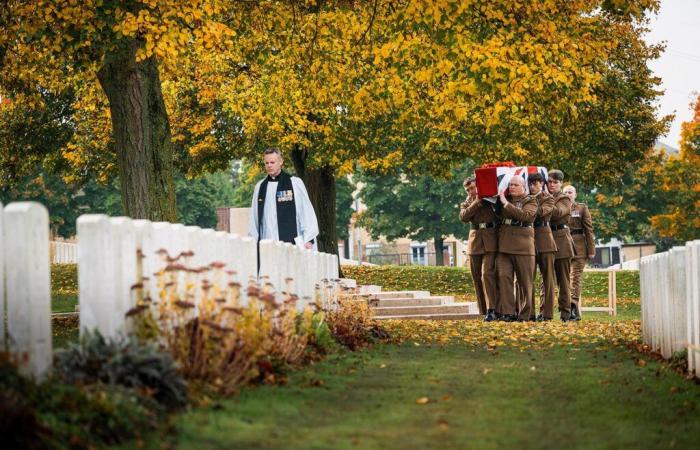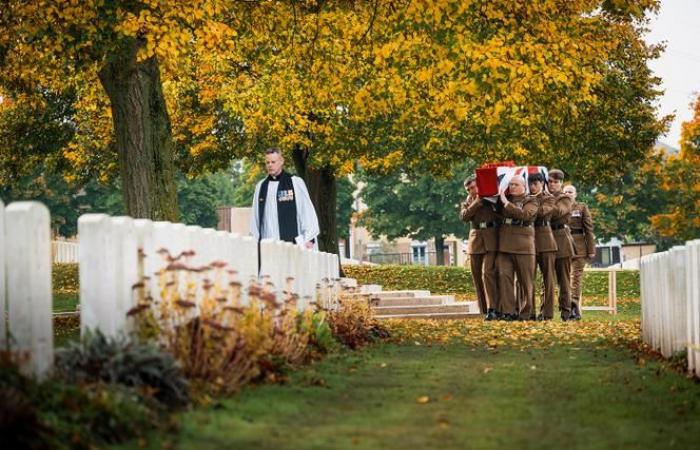The death bell has just rung. Under a hazy sun on this October day, we can see the silhouettes of a Scottish regiment advancing into the military cemetery. We are in Loos-en-Gohelle, near Lens, in the former mining basin of Pas-de-Calais. With serious faces and bare heads in their brown uniforms, these soldiers carry a coffin wrapped in a British flag on which rests a wreath of blood-red poppies. They move slowly towards the hole dug in the ground where this unknown soldier will be buried, like four others, with military honors. College students from Loos-en-Gohelle attended the ceremony, regulated to the millimeter, with enthusiasts of the 14-18 war and a few elected officials from the town, scene of three major battles between May 1915 and August 1917, during which it was completely shaved.
Also present are representatives of the Commonwealth War Graves Commission (CWGC). It is she who manages the twenty-three thousand military cemeteries scattered in one hundred and fifty countries, including three thousand in France, where the soldiers of Great Britain and its empire rest. Founded by royal charter in 1917, this commission is financed by the United Kingdom, India, Canada, South Africa, Australia and New Zealand, constituent states of the British Empire at the beginning of the last century. It is responsible for commemorating the victims of the two world wars of these countries.
The remains of the five soldiers which will be buried in the mildness of this autumn afternoon have passed into the expert hands of its archaeologists. Four of them were found in 2022 in Saint-Laurent-Blangy, near Arras, during work to build a prison. “ It is very likely that they were killed on April 9, 1917, the first day of the Battle of Arras, when the 26e infantry brigade of the 9e Scottish division attacked the place where they were recovered », we read in the booklet published for this ceremony. For the fifth, the conditional is also appropriate. It is, again, “ very likely » that he fell in 1915, during the battle of Loos-en-Gohelle. His bones were discovered in a tunnel between two trenches in Haisnes, 6 kilometers away. All five are “ known unto God » (only known to God, in Old English), the epitaph which appears on all the graves of these unknown soldiers.
You have 67.24% of this article left to read. The rest is reserved for subscribers.
France







